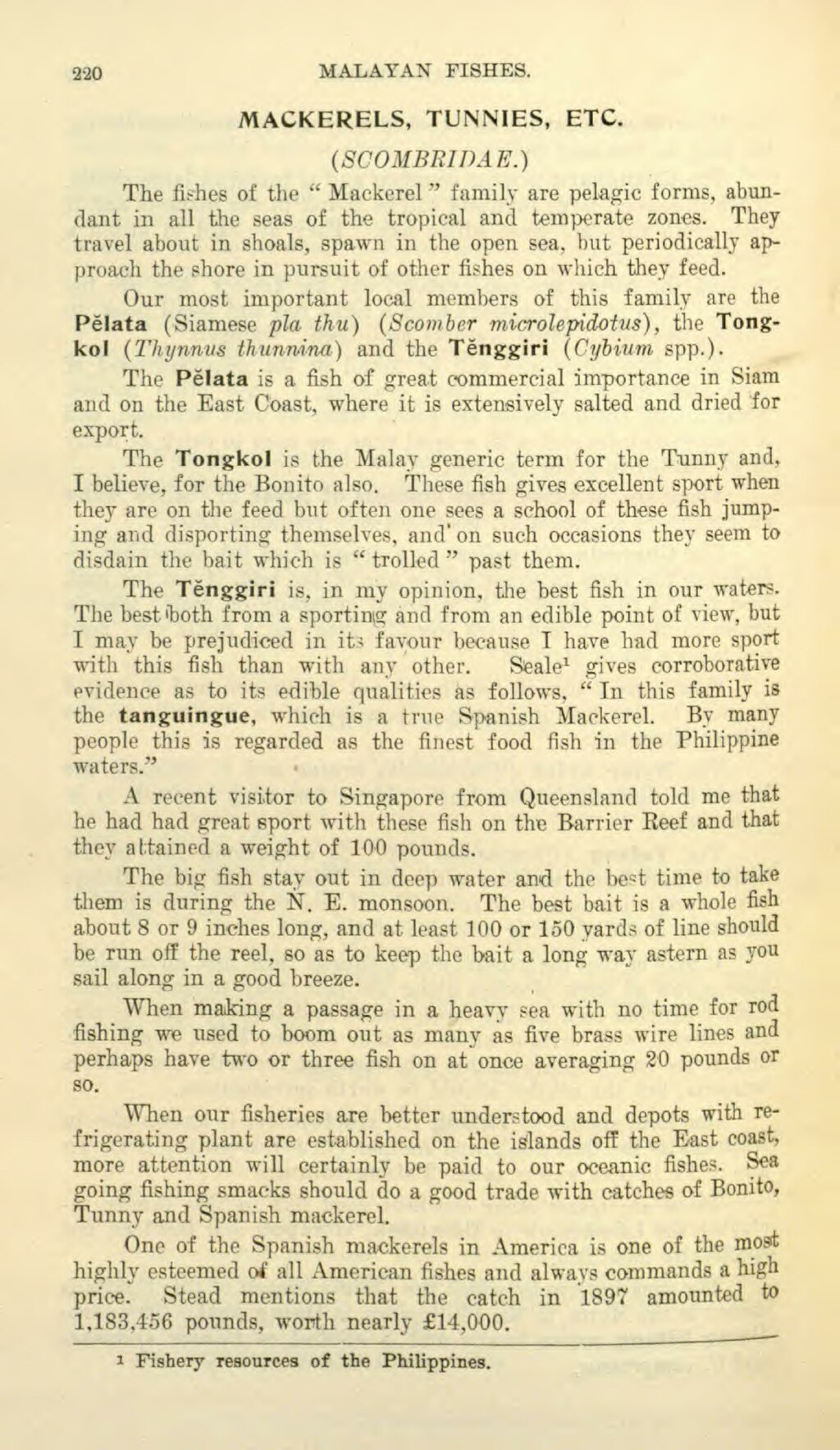MACKERELS, TUNNIES, ETC.
(SCOMBRIDAE.)
The fishes of the "Mackerel " family are pelagic forms, abundant in all the seas of the tropical and temperate zones. They travel about in shoals, spawn in the open sea, but periodically approach the shore in pursuit of other fishes on which they feed.
Our most important local members of this family are the Pělata (Siamese pla thu) (Scomber microlepidotus), the Tongkol (Thynnus thunnina) and the Tĕnggiri (Cybium spp.).
The Pělata is a fish of great commercial importance in Siam and on the East Coast, where it is extensively salted and dried for export.
The Tongkol is the Malay generic term for the Tunny and, I believe, for the Bonito also. These fish gives excellent sport when they are on the feed but often one sees a school of these fish jumping and disporting themselves, and on such occasions they seem to disdain the bait which is "trolled" past them.
The Tĕnggiri is, in my opinion, the best fish in our waters. The best both from a sporting and from an edible point of view, but I may be prejudiced in its favour because I have had more sport with this fish than with any other. Seale[1] gives corroborative evidence as to its edible qualities as follows, "In this family is the tanguingue, which is a true Spanish Mackerel. By many people this is regarded as the finest food fish in the Philippine waters."
A recent visitor to Singapore from Queensland told me that he had had great sport with these fish on the Barrier Reef and that they attained a weight of 100 pounds.
The big fish stay out in deep water and the best time to take them is during the N. E. monsoon. The best bait is a whole fish about 8 or 9 inches long, and at least 100 or 150 yards of line should be run off the reel, so as to keep the bait a long way astern as you sail along in a good breeze.
When making a passage in a heavy sea with no time for rod fishing we used to boom out as many as five brass wire lines and perhaps have two or three fish on at once averaging 20 pounds or so.
When our fisheries are better understood and depots with refrigerating plant are established on the islands off the East coast, more attention will certainly be paid to our oceanic fishes. Sea going fishing smacks should do a good trade with catches of Bonito, Tunny and Spanish mackerel.
One of the Spanish mackerels in America is one of the most highly esteemed of all American fishes and always commands a high price. Stead mentions that the catch in 1897 amounted to 1,183,456 pounds, worth nearly £14,000.
- ↑ Fishery resources of the Philippines.
